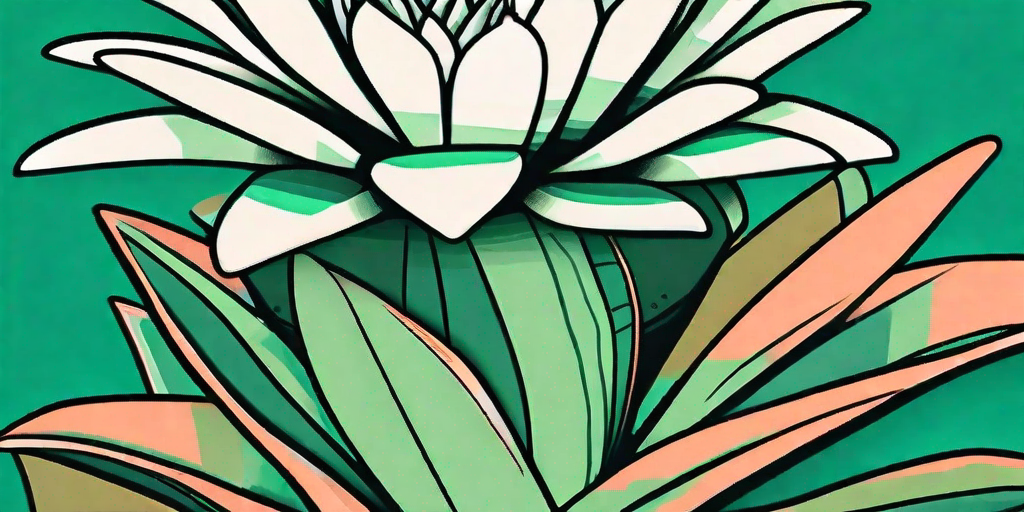
Welcome to the world of succulents, where the plants are as tough as they are beautiful. Today, we're going to dive into the captivating world of Hechtia, a genus of succulents that are as stunning as they are resilient. So, strap on your gardening gloves, grab your watering can, and let's get started.
Understanding the Hechtia
Hechtia is a genus of flowering plants in the Bromeliaceae family, native to Mexico and Central America. With over 50 species, Hechtia offers a wide variety of shapes, sizes, and colors, making it a versatile choice for any succulent lover.
Hechtias are terrestrial bromeliads, meaning they grow on the ground rather than in trees like their air plant cousins. They are characterized by their rosette shape, sharp, toothy edges, and vibrant, often silver or grey-green leaves.
The Hechtia's Natural Habitat
Hechtias are native to arid and semi-arid regions, which means they're used to tough conditions. They can handle intense sun, poor soil, and little water. In fact, they thrive in these conditions. If you've ever been called a 'black thumb', a Hechtia might just be the plant for you.
These plants are also adapted to survive in rocky terrains, often found clinging to steep cliffs and rocky outcrops in their native habitats. This makes them excellent rock garden plants or additions to a succulent display.
Growing and Caring for Hechtia
Now that we've gotten to know Hechtia a little better, let's talk about how to care for these hardy beauties. Spoiler alert: it's easier than you might think.
Hechtias are not fussy plants. They don't require a lot of attention or special care. But, like any plant, they do have some specific needs that you'll need to meet if you want them to thrive.
Light Requirements
Hechtias love the sun. They can handle full sun exposure, but they also do well in partial shade. If you're growing your Hechtia indoors, place it near a south or west-facing window for the best light conditions.
Remember, though, that while Hechtias can handle a lot of light, they can still get sunburned. If the leaves start to turn brown or crispy, it might be getting too much sun.
Watering Needs
When it comes to watering, Hechtias are pretty low-maintenance. They're drought-tolerant, which means they can handle periods of dryness. But that doesn't mean you should forget about watering altogether.
Water your Hechtia when the top inch of soil is dry. Be careful not to overwater, as this can lead to root rot. And remember, it's always better to underwater than overwater when it comes to succulents.
Soil and Fertilizer
Hechtias prefer a well-draining soil mix. You can use a commercial cactus or succulent mix, or make your own by combining equal parts potting soil, coarse sand, and perlite or pumice.
As for fertilizer, Hechtias don't require much. A light feeding once or twice during the growing season (spring and summer) with a balanced, water-soluble fertilizer should do the trick.
Propagating Hechtia
Ready to spread the Hechtia love? Propagating these plants is a breeze. You can do it through seeds, division, or offsets.
Seeds can be sown in a well-draining soil mix and kept moist until they germinate. Division involves separating the plant into two or more parts, each with its own root system. And offsets, or 'pups', can be removed from the mother plant and potted up separately.
Common Hechtia Problems
While Hechtias are generally easy to care for, they can still encounter a few problems. Here are some common issues and how to deal with them.
Overwatering
Overwatering is the most common cause of death for succulents, and Hechtias are no exception. If your Hechtia's leaves are turning yellow or mushy, you might be watering too much. Cut back on watering, and make sure your plant is in a well-draining soil mix.
Pests
Hechtias can occasionally be bothered by pests like mealybugs and scale. If you notice small, cottony spots or tiny, shield-shaped bugs on your plant, you might have a pest problem. Treat with a mixture of water and mild dish soap, or use a commercial insecticidal soap.
FAQs
- Are Hechtias safe for pets?
Hechtias are not known to be toxic to pets. However, their sharp, toothy edges can be a hazard. It's best to keep them out of reach of curious pets.
- Can Hechtias handle frost?
Hechtias are not frost-tolerant. If you live in a region that experiences freezing temperatures, it's best to grow your Hechtia indoors or in a container that can be brought inside during the colder months.
- How often should I repot my Hechtia?
Hechtias generally don't need to be repotted often. Once every 2-3 years should be enough. However, if your Hechtia is outgrowing its pot or the soil is becoming depleted, it might be time for a repot.
Conclusion
And there you have it - a comprehensive guide to growing and caring for the stunning Hechtia. With a bit of sun, the right soil, and a careful watering hand, you'll have a thriving, beautiful succulent that's sure to turn heads.
So, what are you waiting for? It's time to unleash the beauty of Hechtia in your home or garden. Happy planting!















